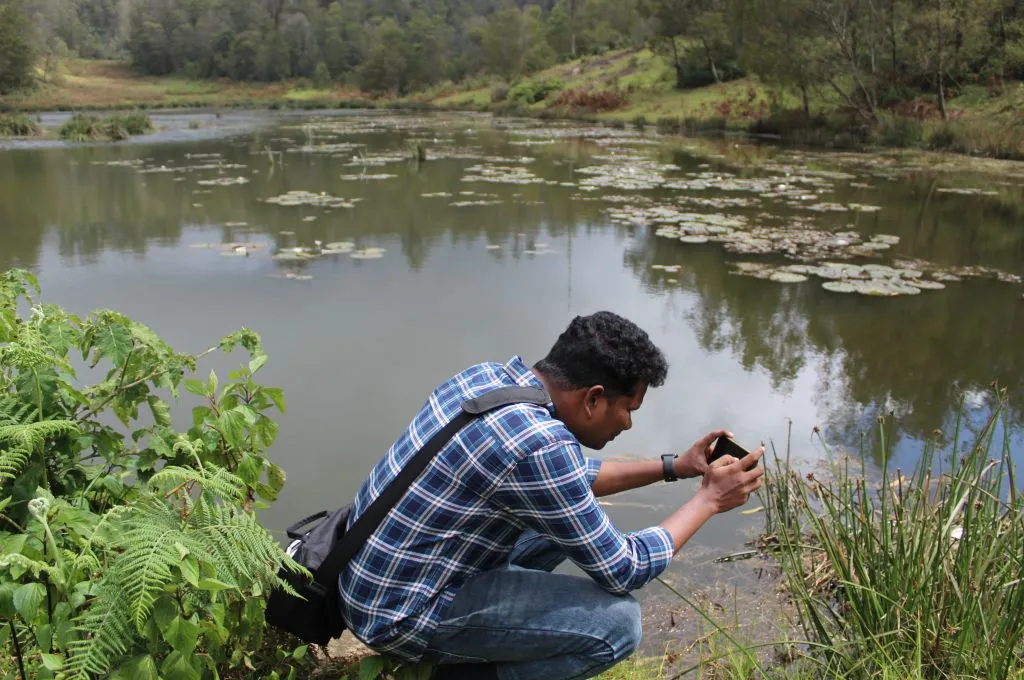As a partnership practitioner and adviser, I’ve been gratified to see that the call for greater collaboration in philanthropy continues to gain momentum. However, this is just one among many different, and equally important rallying calls to transform philanthropy. As I look across key trends in progressive philanthropy, I can’t help but notice some crucial tensions between them, which often seem to be overlooked by their proponents. Navigating these tensions will be an integral part of transforming philanthropy.
In the last 18 months I’ve had the opportunity to engage with dozens of foundations and philanthropy support organisations of various stripes, most of whom are ambitious to transform how they work and the impact they can have. They don’t just want to collaborate and drive collaboration; they also want to be equitable and to shift power (even to ‘decolonize’ their giving); build trusted relationships with their grantees; enable systems change; increase their risk appetite and catalyse innovation; and to do all of this based on data and evidence. This is a lot to transform, so it’s no wonder that practice so often lags behind rhetoric.
But it’s not just that it’s a lot, it’s also that these practices or approaches can also be at odds with one another. There are tensions between the dominant trends in philanthropy, which means that the transformation agenda is much more complex and difficult to navigate than WINGS’ neat set of ten transformation principles implies. Let’s look across some of these key trends, taking as a starting point the calls to shift power, decolonize, and increase equity in philanthropy.
Challenges in addressing power dynamics while fostering collaboration for systems change
From localising philanthropic giving to adopting trust-based philanthropy, the philanthropic sector is increasingly grappling with how to transform the power imbalances and inequities that it has created and continues to perpetuate. The call to action lies at both a relationship level–in terms of how a funder relates to its individual grantees, and at a structural level–in terms of where in the world and to which type of organisations philanthropic capital tends to be deployed. In particular, there is a call for localised giving, to shift resources away from the origins of colonial exploitation and instead towards locally-led actors representing marginalized communities.
Several initiatives argue that long-term, flexible funding is the underpinning for an ‘equitable partnership’.
On the relationship level, several campaigns and initiatives argue that long-term, flexible funding–with generous coverage of operational support costs–is the underpinning for an ‘equitable partnership’ between funder and funded, especially when combined with minimal reporting requirements, strong feedback, communication mechanisms, and provision of complementary (non-financial) support. For many grantees, this indeed describes the gold-standard of funding practice. However, it is not without its complexities, especially when combined with other philanthropic ambitions.
For example, increasing numbers of funders (and the infrastructure that supports them) are aspiring to enable and catalyse systems change: to address underlying causes rather than symptoms, to thereby have a long-term, sustainable impact. Some argue that the funding practices outlined above are critical for enabling ‘systems change innovators’ (NGOs, social entrepreneurs, etc.) to drive change. However, systems change in any given issue area cannot happen without an aligned strategic approach among at least some key actors in a system–i.e. it requires collaboration and partnership.
If funder and grantee alike truly want to work together to enable systems change they need to form a trusted partnership: agreeing on shared objectives, with shared accountability for achieving those by combining and integrating complementary resources. This can be at odds with the implicit (or sometime explicit) idea in trust-based funding practices that the grantee knows what is best, and the funder should leave them alone to get on with it. Instead, it requires finding a way to work together that builds trust. Co-creation, for example, can help foster greater levels of trust between funders and implementers, but requires a good deal of interaction between them.
In fact, systems change also needs more than a collaborative approach between funder and grantee. It requires multiple stakeholders to be ready to work with others, across different societal sectors, combining and aligning their resources in pursuit of transformational change. This is why many funders are also recognising their important role in convening and encouraging collaboration between their grantee partners and other key stakeholders.
For those that are also serious about mitigating power imbalances and ensuring equitable partnerships with grantees, this can be a delicate matter as donor-driven collaboration can be another way in which funders embed an unhealthy power dynamic with and among their grantees. If funders want to avoid falling into this trap, they need to ensure that their partners can afford to invest time and resources into exploring collaboration and partnerships. This is something that happens outside of projects, and so requires sufficient operating costs on top of project budgets, as well as the luxury of time and space without the need to prove immediate results–i.e. all in line with the central tenets of a trust-based approach.

Finding equitable and inclusive approaches to evidence-based systems change
However, another challenge for those espousing ‘trust-based’ approaches to philanthropy while also aspiring to systems change is the call for minimal reporting requirements. For example, in a bid to reduce reporting burden on grantees, Thousand Currents, amended its reporting templates to just one question, ‘What would you like us to know about your work and what has happened in your organisation over the past year?’ Such an approach can make it difficult to know what progress is being made towards systems change, and certainly runs counter to calls for a more rigorous, evidence-based approach to philanthropy.
Many foundations are grappling with this challenge and finding ways around it by focussing on learning rather than proof and seeking to make this a collaborative effort with their partners. For example, Porticus develops ‘evaluation methodologies in close collaboration with our partners, supporting them and building capacity where needed. These evaluations also include assessing our own role.’
Some evidence-based approaches can risk placing an unrealistic burden of proof on grantees.
By contrast, some evidence-based approaches can risk placing an unrealistic burden of proof on grantees to demonstrate their individual contributions to impact, thereby undermining collaborative approaches required for systems change. The demand for evidence and ‘contribution to systems change’ can also prevent funders from achieving their ambitions to shift power at a structural level. In particular, community-based organisations may struggle to adhere to requests to use stringent indicators and methodologies in their proposals and reporting, making it challenging or even impossible to them to access international funding opportunities.
‘Systems change’ as an approach can itself exclude many organisations, as the concept is so often equated to ‘scale’, leading funders to favour larger organisations or those with potential to ‘scale up’. There is a lingering idea that small organizations have limited capacity to meet long-term end goals or provide direct services. Such arguments hinge on the idea that systems change work can only be accomplished by large organizations with sizeable budgets, particularly from the Global North.
But the fact is, systems change cannot only be achieved by a few big players; nor does it require that every single stakeholder in the system is working to transform the system. For example, those that are delivering essential services might not be focussed on systems change, yet their work could be an essential part of system transformation, especially when their knowledge and experience can be leveraged in wider initiatives for systems change.
Even if funders are clear about and open to the role of smaller, local, and more service-oriented organisations in systems change initiatives, the concept itself is infused with technical jargon, which can be exclusionary for potential grantees and prevent their access to ‘systems change’ funding calls.
Leveraging networks and influence to temper the pitfalls of top-down philanthropy and private investment
Another challenge for the drive to partner more equitably and ‘locally’ is the growing trend in philanthropy to take more risks while also reducing the risks of others, thereby driving innovation for transformational change. This is emphasized in relation to ‘Public-Private-Philanthropy Partnerships’, particularly those seeking to catalyse investment from the private sector, as championed by the World Economic Forum in its Giving to Amplify Earth Action initiative.
Such an approach can tend towards ‘big bet’ top-down philanthropy, which is built on strategies formulated by those without lived experiences of the issues at hand. It is typically based on the personal passions or interests of the funders, including private partners who are motivated by market-rate returns on their investment alongside, or even ahead of, social or environmental progress. At the same time, philanthropy has a unique role to play in such partnerships to avoid this dynamic: it can leverage its influence and networks to ensure more equitable, power-sensitive approaches while building critical bridges between the profit-driven motivations of the private sector, the social goals of governments, and the justice goals of civil society actors.
Transformation: a complex but unavoidable path
This is just a flavour of some of the complexities and sensitivities underlying the various intersecting trends in progressive philanthropy today. While they may not be fundamentally incompatible, there can be tensions between these approaches. Thinking these through together with peer foundations and partners (as happened at a recent event hosted by Co-Impact and Spring Impact) can help to navigate the ambitious transformation agenda, as we ask ourselves and our organisations key questions such as:
- Are we truly committed to systems change, and what do we understand that to mean?
- How do we work with others to achieve systems change, while also seeking to transform power and use our own power responsibly?
- What level of evidence do we need to be sure that we–together with our partners–are achieving our goals? What’s the best and most equitable way to seek that evidence?
- When making big bets or taking risks with or on behalf of others, how can we also ensure that we are being inclusive and equitable, while promoting justice?
In the same way that society adapts to changes in social norms, technology, and unfolding crises, so too must philanthropy. This is why we see an ever-changing set of trends in the philanthropic sector, and with it, a host of buzzwords and bandwagons. Grappling with these trends and their jargon can take us away from our daily work, but it is also a necessary part of navigating the perpetual, complex, and essential journey of transformation.
This article was originally published on Alliance magazine.





